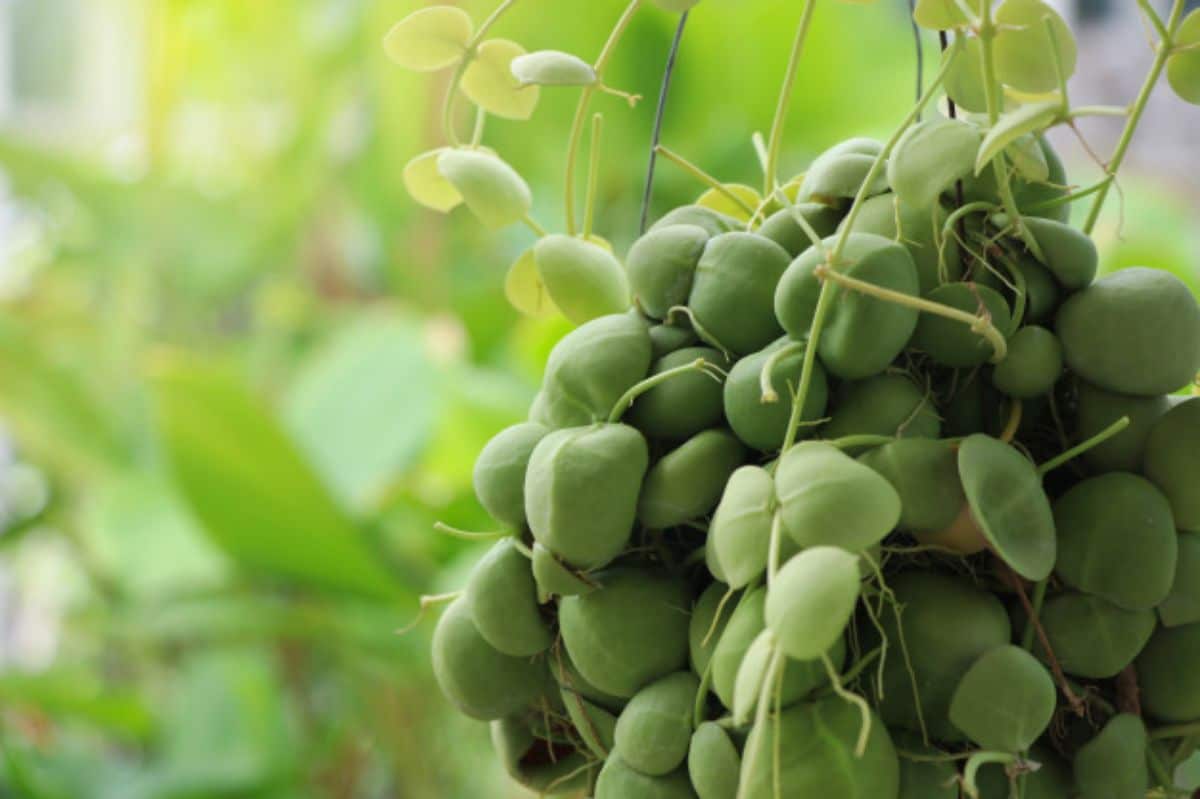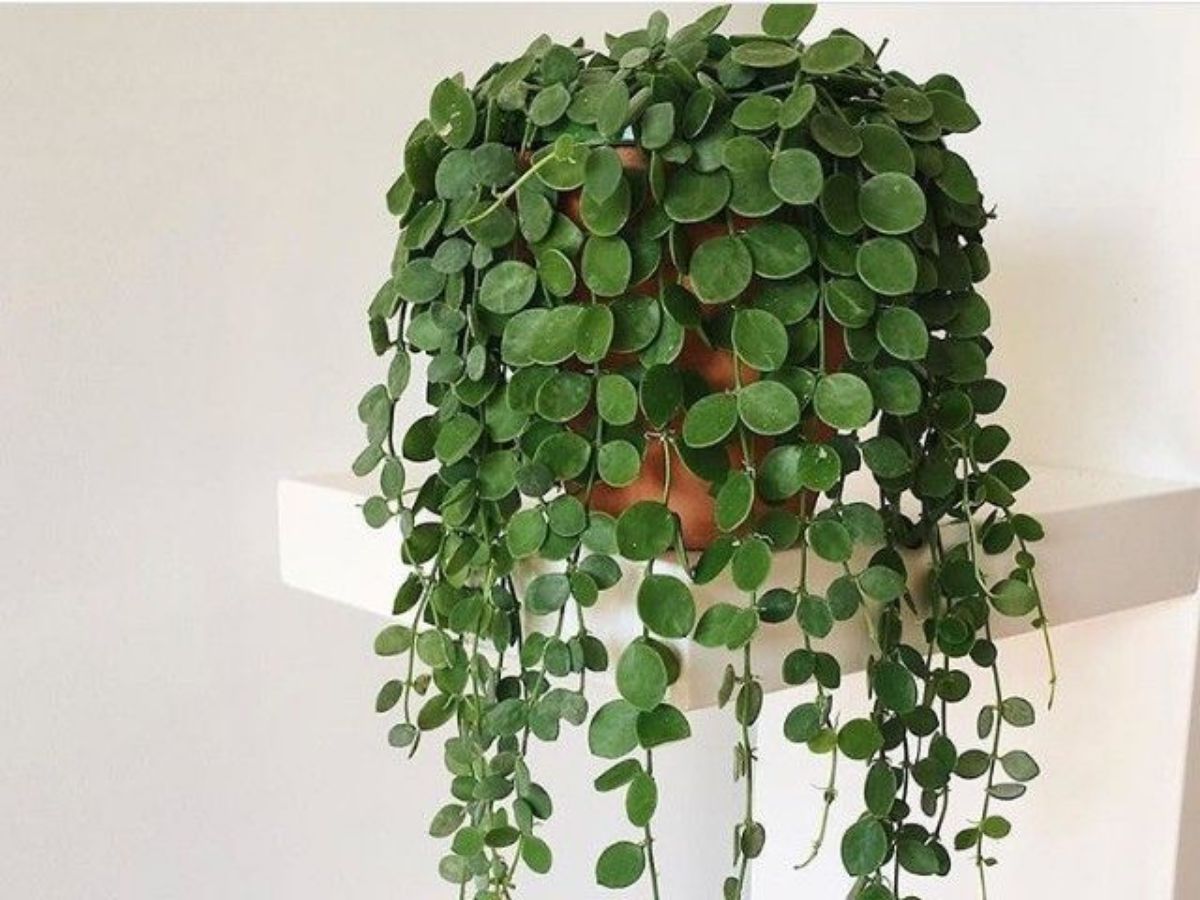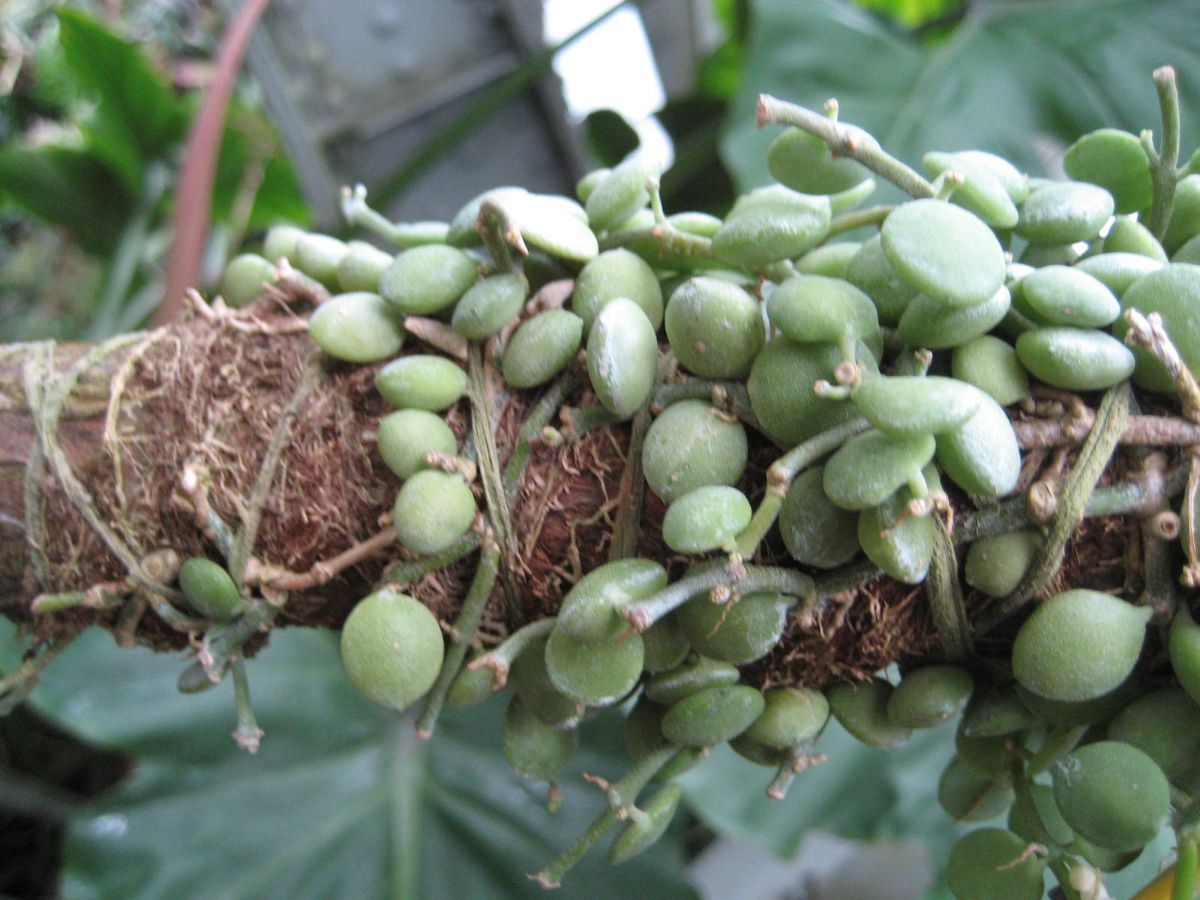
If you are a true lover of hanging plants, one of those that you can have at home, and that is not going to give you many problems, is, without a doubt, the Nummular Dischidia. It is an easy plant to get and that will give you a unique look in itself.
If you would like to know more about the Nummular Dischidia, such as where it comes from, what its characteristics are, or what curiosities it has, do not hesitate to take a look at the guide that we have prepared for you.
Features Nummular Dischidia

Source: succulentavenue
The first thing you have to know about the Nummular Dischidia is that belongs to the family of succulents, which already gives you an idea of how easy it will be to take care of it and of the few problems that it can give you. They usually receive other names, such as ant plant or orchid button. This is because in its habitat, which by the way is in China and India, it is the one chosen to 'hide' the insects and also right there they feed on the CO2 that the plant generates. But don't worry, having it at home does not mean that you are going to have problems with ants or insects in general.
Its growth is usually slow, which is perfect for not having to continually prune it so that it does not invade more than necessary. Has a green and rounded leaves, sometimes similar to a coin. These are fleshy and appear on long hanging stems. In addition, in its flowering season you will find some bouquets of white flowers. They are not very "pretty" because of their waxy appearance, but they do attract attention.
When it comes to having a Nummular Dischidia at home, the most common option is for it to be hanging; but it can be kept in a pot on the ground, the only thing that the stems will fall on the ground.
Caring for the Nummular Dischidia

Now that you know a little more about Nummular DischidiaIt is time to know what little care you will need to always stay in good condition. Keep in mind that many succulents later adapt to the conditions, temperature, etc. that you put on it, and with this one it will not be different, although it will require that you get as close as possible to its needs. And what are those?
Lighting design
If you notice, the Nummular Dischidia it is a plant that has many leaves. And that implies that needs a lot of light. Of course, it does not like direct light, although it tolerates it as long as you do not take it out in the hours of more incidence of the sun's rays. It is best to find a place where it receives a lot of indirect light and for many hours.
The trick to know if it is satisfied or not you will notice it in the stems. If they start to have leaves with a lot of separation, and they also look too long and weak, then it is that they lack light. Change it and see if the plant begins to put on more leaves.
Temperature
The natural habitat of the Nummular Dischidia It is a warm climate, which means that you should provide a place where the temperature does not drop below 15 degrees. In fact, it is not a plant that tolerates cold, and in winter it must be kept at home protected from drafts and drops in temperature.
Now, that doesn't mean it doesn't need moisture. Unlike; He loves to have high humidity, so you will have to spray his leaves at least once a week and even leave him a plate with water and stones so that he has that humidity.
Irrigation
Now let's talk about the irrigation of Nummular Dischidia. The first thing you should know is that, as a good succulent, you hardly need water. That implies that only when you notice that the soil is dry is when you should water it, but it does not need much.
Our recommendation is that you water it, wait for it to release the water and remove it. That way you will prevent the roots from rotting from the remaining water.
In addition, and as curiosities of the Nummular Dischidia, you should know that prefers to absorb water from the environment, that is, through spraying, so if you do it like this often, you may not even have to water it.
Fertilizer
During spring and summer, the Nummular Dischidia has its growth stage. But, as we have said before, it grows very slowly. With a fertilizer what you can do is help the plant to accelerate something and notice a difference.
And which one to use? You can try one of green plants. You must apply it diluted with water and, if possible, add less than the manufacturer tells you so as not to force it too much.
Can you multiply the Nummular Dischidia?
To finalize the care of the Nummular Dischidia you should know that you can multiply the plant in two different ways: by cuttings or by cutting the stems.
In both cases, you have to put them in a glass or vase with water and wait for the roots to make their appearance. Only when you see that these are large (usually it will take several weeks for this), you can plant them in pots and continue to enjoy the plant.
You can also do it through the seeds, since once flowering has finished, you will have plant seeds.
Curiosities

As we have told you before, the Nummular Dischidia comes from China and India. However, what you may not know is that it is an epiphytic plant. You do not know what it means? It is a plant that lives on another plant or trees and is attached by aerial roots to survive, and in some cases even feed on that vegetable.
In addition, today it has become one of the most famous plants on Pinterest. There is a real passion for it and many interior designers and decorators are using it in their projects.
Do you dare to take care of a Nummular Dischidia? As you can see, it is very easy and it will hardly take your time. Add to it that it is not easy for him to die. So why don't you give it a try?